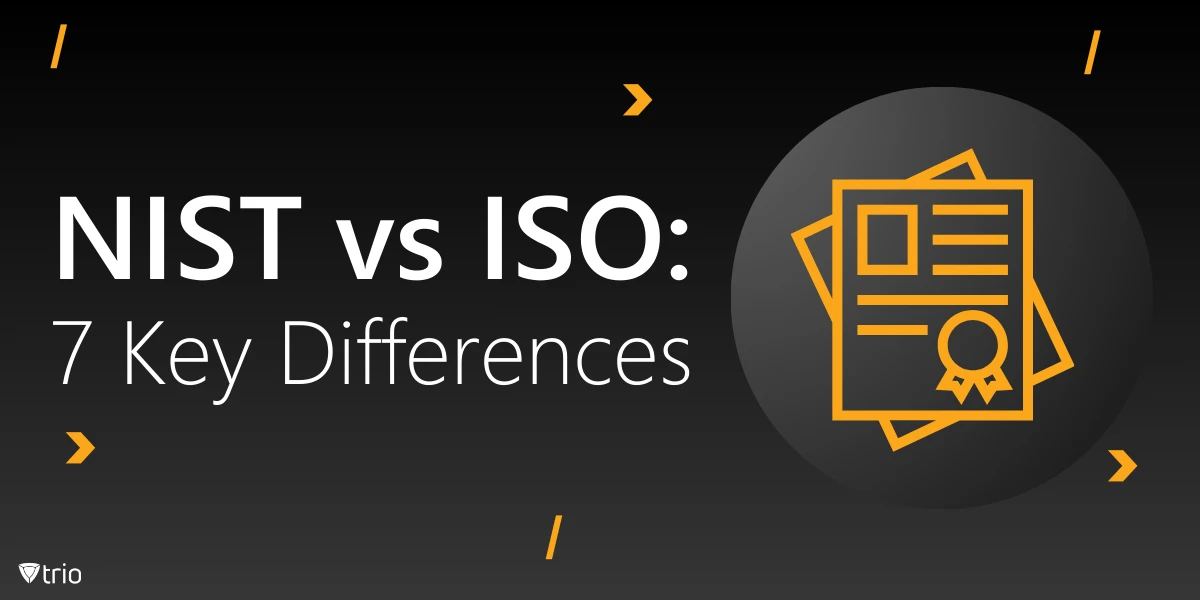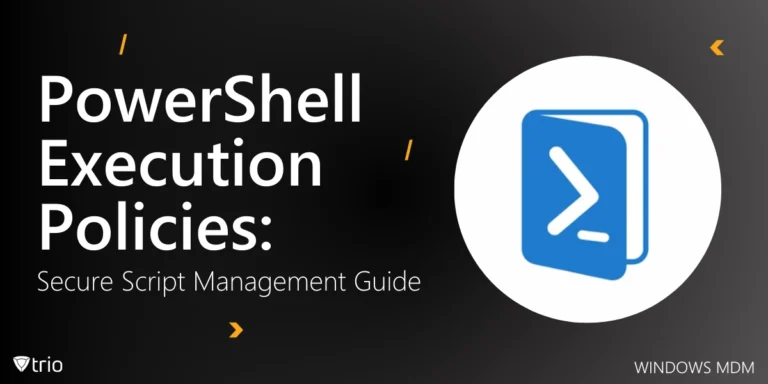Cybersecurity frameworks are essential for keeping organizations’ data safe and secure. With cyber threats becoming increasingly sophisticated, businesses must adopt structured approaches to protect their systems and sensitive information. This is where frameworks like NIST and ISO come into play, guiding companies to build strong defenses.
NIST and ISO are two of the most popular standards in the industry, each offering unique approaches to cybersecurity. While both provide guidance for securing systems and ensuring IT compliance, they differ in scope, structure, and implementation. Understanding these differences is crucial for organizations aiming to choose the right path.
This blog will dive into the details of the ISO vs. NIST debate, comparing their features and applications. By the end, you will gain insights into which framework aligns best with your company’s needs, whether you’re focusing on compliance, risk management, or international operations.
What Is NIST?
NIST, or the National Institute of Standards and Technology, is a federal agency that creates detailed security frameworks to help organizations—especially government agencies—protect their information systems. It’s the go-to guide for setting up a cybersecurity program that protects sensitive data while following specific protocols.
At the heart of NIST compliance are its key components, like the NIST Cybersecurity Framework and NIST 800-53, which outline practical steps for businesses. These components emphasize a take-charge approach, guiding organizations to identify, protect, detect, respond, and recover from cyber threats effectively. It’s a systematic, comprehensive approach that keeps systems secure.
What Is ISO?
ISO, short for the International Organization for Standardization, develops international standards to help organizations manage their information security. Partnered with the International Electrotechnical Commission (IEC), ISO sets a global benchmark—meaning companies across the world look to it as the gold standard for their cyber threat management.
For instance, ISO/IEC 27001 is an internationally recognized framework, forming the core of the ISO cybersecurity framework. It emphasizes continual improvement and various types of compliance, and it is adaptable for businesses aiming to secure their data while evolving their processes. This approach helps organizations build a resilient, long-term strategy for data protection.
NIST vs. ISO: Breaking Down the Differences
In understanding the nuances between ISO vs. NIST standards, it’s important to know that both provide improved cybersecurity metrics, but they have unique strengths and challenges. Let’s look at the key areas where these frameworks differ so you can make the best decision for your organization.
Scope and Focus
NIST and ISO approach cybersecurity from different angles. NIST emphasizes building a security posture tailored to specific sectors, often focusing on U.S. government agencies. It’s about covering the full spectrum—from identifying risks to responding and recovering. ISO, meanwhile, focuses on international standards, offering a broad and adaptable structure suitable for global businesses.
When it comes to NIST vs. ISO risk assessment, there are clear distinctions. NIST integrates a detailed, systematic risk evaluation process within its frameworks, aligning with federal standards. ISO’s approach, however, is broader and encourages continual improvement and allows companies flexibility in adapting their security programs based on global compliance needs.
Origin and Adoption
The origins of these frameworks also play a big role in their adoption. The NIST cybersecurity framework is U.S.-based and primarily used by American organizations, especially within federal and state agencies. Its influence is steadily growing outside the U.S., but its core remains government focused.
On the flip side, ISO is globally recognized. Companies from various regions follow ISO standards because they fit diverse international needs. The comparison of NIST cybersecurity vs. ISO highlights this difference—while NIST remains dominant in the U.S., ISO is the go-to for multinational organizations needing a universal security framework.
Structure and Flexibility
NIST offers a managed framework with structured categories and provides specific steps for building and maintaining cybersecurity programs. It’s a clear roadmap—perfect for organizations looking for a detailed guide to establish their security posture.
ISO, by contrast, offers flexibility, which can be advantageous for businesses needing customization. Its structure allows companies to adapt processes, ensuring the framework aligns with different business models and goals. This makes ISO ideal for organizations needing a flexible yet comprehensive approach to managing security.
Implementation Process
Implementing NIST focuses heavily on data security and protection, and it outlines specific actions IT admins must follow. Its process-oriented approach ensures that organizations can consistently monitor and adjust their information systems to mitigate risks effectively.
ISO’s implementation, while also concerned with data protection, leans toward a broad, strategic view. It promotes an organization-wide culture of continuous improvement, meaning the steps for integration are flexible. This allows companies to adapt their cybersecurity strategies as their business and threat landscape evolve.

Certification and Compliance
One major difference in compliance: NIST is more of a guideline, helping organizations shape their strategies. It doesn’t offer certification but helps establish a baseline for security. NIST compliance vs. ISO standards demonstrates that NIST’s flexibility can suit organizations looking to implement without formal certification.
ISO provides certification, a crucial benefit for global companies needing a standard recognition of their security measures. This certification process ensures that organizations meet global benchmarks and continuously work to mitigate risks. Businesses can showcase compliance through ISO certification and enhance credibility.
Cost and Accessibility
ISO certification involves costs—organizations must pay for audits, compliance checks, and continual monitoring. This investment can be significant, especially for smaller businesses aiming to meet the international standard and demonstrate certification.
NIST, however, offers free resources. It’s accessible to any organization, allowing them to build a comprehensive cybersecurity program without upfront certification costs. This makes NIST an appealing option for businesses seeking cost-effective ways to manage their security posture.
Suitability for Organizations
For government agencies or the U.S.-based companies, NIST frameworks are often the best match, given their comprehensive focus on managing risk and securing information systems. It’s also effective for organizations focusing on precise metrics to prevent company data breaches and enhance their security programs.
ISO, on the other hand, suits multinational organizations needing a unified approach. Its adaptability is crucial for businesses operating across different regions, ensuring they meet global security standards. ISO’s certification also offers credibility, which can be a key factor for companies dealing with international clients or regulatory bodies.

Making the Right Choice
Choosing between NIST and ISO frameworks hinges on your organization’s specific needs. Consider factors like company size, regulatory requirements, and available resources. If you’re a U.S.-based company or government agency, NIST might suit you better. For international operations, ISO’s global recognition could offer more advantages.
Assess your current security posture to determine which framework aligns with your goals. Think about whether you need formal certification or prefer flexible guidelines. Evaluate your capacity to implement and maintain the framework effectively. By weighing these factors, you can select the approach that best fortifies your organization’s cybersecurity strategy.
Bridging the Gap With Trio
Implementing NIST or ISO frameworks is essential, but managing devices across your organization can be a hurdle. This is where Mobile Device Management (MDM) becomes vital. MDM solutions like Trio enhance your security posture by ensuring all mobile devices align with your cybersecurity protocols.
Trio simplifies device management, making it easier to enforce compliance and protect sensitive data. It integrates smoothly with your existing systems, helping you mitigate risks without added complexity. Want to see how Trio can bolster your security measures? Give our free demo a try and discover the benefits firsthand.
Final Thoughts on NIST vs. ISO
Deciding between NIST and ISO frameworks comes down to what fits your organization best. We’ve looked at how each affects your security posture, from their origins to implementation. Knowing these key differences empowers you to choose a path that strengthens your cybersecurity measures effectively.
See Trio in Action: Get Your Free Trial Now!
Think about factors like regulatory demands, company size, and the importance of continual improvement. Assessing these aspects helps you pick a framework that not only protects your data but also aligns with your organization’s goals and resources.
Get Ahead of the Curve
Every organization today needs a solution to automate time-consuming tasks and strengthen security.
Without the right tools, manual processes drain resources and leave gaps in protection. Trio MDM is designed to solve this problem, automating key tasks, boosting security, and ensuring compliance with ease.
Don't let inefficiencies hold you back. Learn how Trio MDM can revolutionize your IT operations or request a free trial today!




